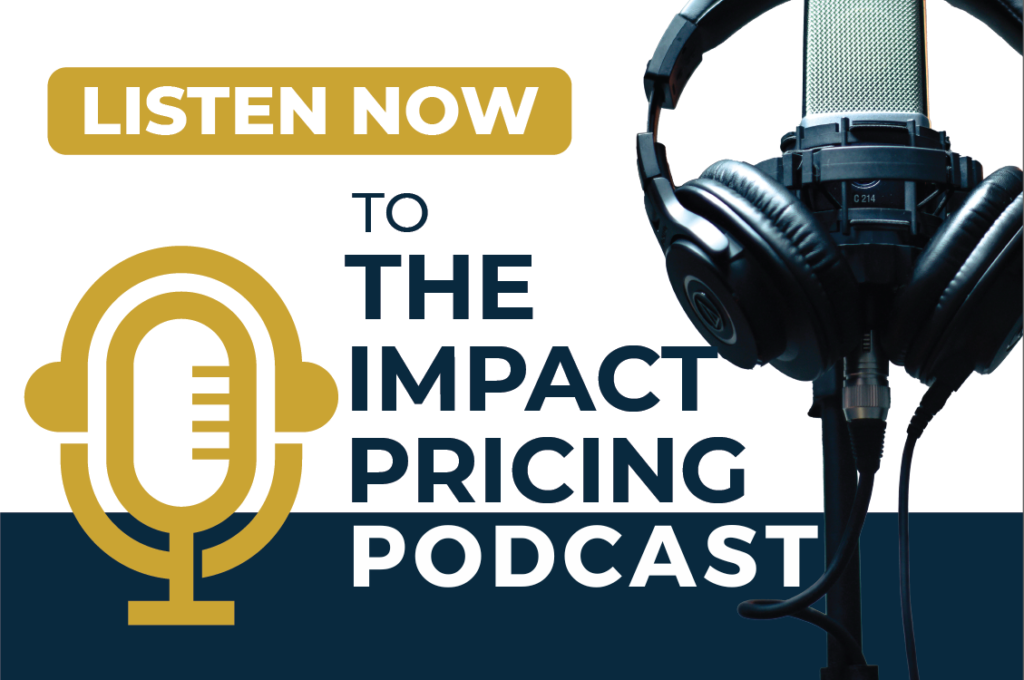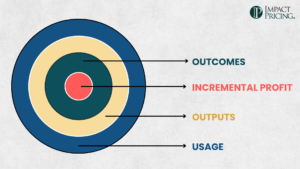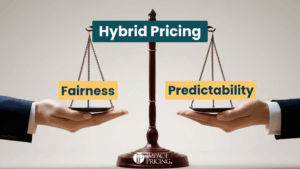You can listen to the full audio version of this blog we call — Blogcast.
The value architecture has three layers: foundational problems, problem scope, and situational context.
Last week we talked about how foundational problems define market segments. But, once you know the segment, packaging becomes the next step. Packaging lives in the problem scope layer.
Buyers inside the same segment may share the same foundational problem, but they experience it at different levels of detail. Some have a narrow problem scope and need a basic solution. Others face broader, more complex challenges and want a more comprehensive package with advanced features, automation, or integrations. A small medical practice and a large hospital both struggle with documentation, but the scale and scope of their needs differ dramatically.
That is why we package. Buyers identify first with their foundational problem, then look at the options for solving it. Packaging allows them to self-select into the version that best matches their situation.
In other words, packaging creates clarity. It guides the “Which one?” decision at two levels:
- Which supplier? Why choose our solution instead of a competitor’s?
- Which version? Once a buyer chooses us, which of our packages best fits their scope of problems?
Effective packaging maps problem scope to offer scope, so buyers can clearly see which version matches their situation.
Four Classic Packaging Frameworks
There are four common ways, across industries and technologies, that organizations structure their packages.
- Good-Better-Best (GBB)
GBB presents three or more tiers, each solving progressively broader or deeper problems. “Good” fits narrow needs, “Better” expands scope, and “Best” provides the most comprehensive solution. A common example is airline seating. Economy, premium economy, and business class are all ways of solving the same problem, transporting a passenger, but at different levels of comfort and service.
Feature gating often underlies GBB. Certain capabilities are reserved for higher tiers to encourage upgrades. On airlines, meals, lounge access, and more spacious seating are all gated to the higher classes of service. - Core + Add-Ons
In this model, a base solution is offered to everyone, while additional modules can be purchased separately. Cable television historically followed this model. Customers bought a basic package and then paid extra for premium channels like HBO or Showtime. The add-on strategy allows companies to monetize specialized needs without forcing them into every purchase. - All-You-Can-Eat
Here, customers pay one price for unlimited use. Restaurants popularized this structure, offering buffets where the marginal cost to the diner is zero no matter how much they eat. The value lies in peace of mind and simplicity. - A La Carte
In a la carte, instead of bundles, each component is sold separately. At a restaurant, this would be ordering side dishes, entrees, and drinks individually rather than as a fixed menu. A la carte packaging provides maximum flexibility but requires buyers to know what they want and can overwhelm them with choices.
These four structures form the basic toolkit for packaging. They provide proven ways to align offer scope with problem scope. And they are not mutually exclusive. A Good-Better-Best model may also offer add-ons, while an all-you-can-eat plan might coexist with a la carte modules.
Applying Packaging Frameworks to AI
These classic packaging frameworks are universal. AI does not change the structures themselves, but it does change where and how they are applied. To see this clearly, we need to look at the four different ways AI shows up in products and examine how each placement can (or cannot) fit the frameworks.
AI-Native Products
Some products are built entirely around AI from the start. The product is AI. Jasper AI, for example, provides copywriting assistance powered by generative AI. Everything about the product is built on the model’s ability to generate text. Buyers are choosing an AI-native solution to solve their content creation problem.
Increasingly, many of these products take the form of agents — AI systems that act on behalf of a user to accomplish tasks end-to-end. For example, a customer service agent might resolve tickets without human intervention, or a finance agent might reconcile expenses automatically. These agents are AI-native by design, since their entire value comes from acting intelligently and autonomously to solve a defined problem.
- Good-Better-Best (GBB): Jasper AI tiers its offers by scope of use: Creator (individuals), Teams (collaboration), and Business (scale). Runway ML does the same by limiting resolution and export quality at lower tiers. Agents could follow this model too: a “basic” agent for simple tasks, “better” for more complex workflows, and “best” for cross-system automation.
- Core + Add-Ons: Stability AI offers base access to Stable Diffusion, with optional add-ons such as enterprise hosting and model fine-tuning. Similarly, an agent platform could offer a core agent with optional add-ons for industry-specific tasks.
- All-You-Can-Eat: MidJourney’s “unlimited relaxed generations” plan is a flat-fee all-you-can-eat structure. This would be risky for agents because compute costs scale with activity, but some may attempt it.
- A La Carte: OpenAI’s API lets buyers choose which endpoints they want, such as text, image, speech, or embeddings. In the same way, buyers could purchase individual agents one at a time, such as a support agent, finance agent, or HR agent.
AI as a Feature
Other times, AI is embedded in an existing product to enhance capabilities. Grammarly, long known for grammar checking, recently added generative AI writing suggestions. Here, AI is not the product itself, but one feature among many. In fact, in many products, users may not even realize they are interacting with AI. They just see faster, smarter, or more personalized functionality.
This highlights a fundamental truth: buyers do not buy features, they buy solutions to problems. Although today many people say they are “buying AI,” eventually AI will become like SaaS. Nobody buys “SaaS” for its own sake. They buy the capabilities it enables. AI will follow a similar path, invisible yet essential, and this will undoubtedly occur first when AI is added as a feature to an existing product.
- Good-Better-Best (GBB): Grammarly reserves advanced AI tools for higher tiers. In other products, AI is invisible but still contributes to what makes “better” or “best” more valuable.
- Core + Add-Ons: Salesforce Einstein Analytics is sold separately, explicitly marketed as AI. But often, AI is bundled inside an add-on buyers would have purchased anyway, such as forecasting inside a reporting package.
- All-You-Can-Eat: Some SaaS providers roll AI into unlimited-use plans without calling it out. Buyers see “unlimited dashboards” or “unlimited analysis,” unaware AI is powering the experience.
- A La Carte: ERP systems may sell modules for forecasting, scheduling, or anomaly detection. Buyers see themselves as buying forecasting, not AI, but AI quietly delivers the result.
AI in a Tier
Some companies position AI as the main reason to upgrade. Zoom does this by making AI meeting summaries available only in its Business and Enterprise plans. AI is not a side feature here. It is the justification for a higher-priced tier.
- Good-Better-Best (GBB): This is the natural fit. GBB relies on feature gating, and AI is simply the gated capability that defines the “better” or “best” tier.
- Core + Add-Ons: Sometimes, instead of forcing a tier upgrade, vendors let mid-tier customers purchase the AI module separately. This shifts the structure from “AI in a tier” to “AI as an add-on.”
- All-You-Can-Eat: Does not fit. Once AI is offered without gating, it is no longer “AI in a tier.” It becomes part of unlimited access instead.
- A La Carte: Also does not fit cleanly. Breaking out an AI tier into modules repositions the capability as add-ons, not tiers.
AI as an Add-On Option
AI can also be sold as an optional purchase layered on top of a core solution. Microsoft Copilot for Office 365 is the clearest example. Buyers can keep the base suite at its current price and choose to purchase AI separately.
Agents also often fit here. A CRM vendor, for example, might offer a core system for managing customer data, then sell specialized agents — a customer service agent, a sales follow-up agent, or an onboarding agent — as add-ons. In this case, the core product is not AI-native, but AI agents expand its capabilities in modular ways.
- Good-Better-Best (GBB): GBB tiers may exist independently of AI. A company can define tiers around non-AI features while still offering AI or agents as add-ons across all versions.
- Core + Add-Ons: The natural fit. Copilot shows how AI can be monetized as a bolt-on without disrupting the core package. Agents fit perfectly here, since each one can be sold as a separate module.
- All-You-Can-Eat: Not applicable. By definition, add-ons separate AI from the core subscription. Unlimited usage may affect the pricing metric after purchase, but not the packaging.
- A La Carte: Add-ons can be sold one by one. A vendor might let buyers pick specific agents such as customer service, finance, or HR, and pay individually.
Packaging for AI Platforms
So far we have looked at packaging AI solutions, where the foundational problem is clear and packaging aligns with problem scope. But not all AI is delivered as a solution. Some companies, like OpenAI with ChatGPT or AWS with Bedrock, sell AI as platforms.
Platforms differ from solutions in a critical way. They do not address a single foundational problem. Instead, they are broad tools that can be applied to many different problems of dramatically different value. One customer might use ChatGPT to write marketing emails, another might use it to generate legal documents, and another might integrate it into a software pipeline. The value varies wildly depending on use case.
Because problem scope cannot be easily defined, platforms rarely fit neatly into solution-style packaging. Instead, their packaging tends to follow broad, blunt structures:
- Usage tiers (OpenAI tokens, Anthropic Claude Pro monthly cap)
- Per-seat pricing (ChatGPT Team, Enterprise)
- Enterprise contracts (flat rates, bundled services, negotiated terms
These approaches do not capture value with much precision, but they give buyers clarity and give vendors a predictable way to manage costs.
Platforms can still experiment with the classic frameworks, but the fit is weaker than with solutions:
- GBB: ChatGPT itself is sold in a Free, Plus, and Enterprise model, but the tiers do not align with problem scope. They align with scale and performance.
- Core + Add-Ons: Some platform APIs offer premium features such as advanced models or higher rate limits as add-ons.
- All-You-Can-Eat: Risky, but occasionally offered to casual users, but the usage caps typically associated with them negate the all-you-can-eat concept.
- A La Carte: AWS Bedrock is a strong example, offering access to different models priced separately.
The key difference is this: packaging for platforms is not about guiding a “Which one?” decision inside a segment. It is about giving structure to something inherently open-ended. Buyers choosing platforms are typically buying AI as a technology, not a solution to a problem.
The four classic packaging frameworks are universal. AI does not require inventing new ones, but it does demand clarity about placement. Whether AI is native, a feature, a tier, an add-on, or a platform, it can be expressed through Good-Better-Best, Core + Add-Ons, All You Can Eat, or A La Carte, though not always all of them.
Just as importantly, buyers do not always recognize AI as the reason for the packaging choice. Sometimes AI is the explicit driver, like Zoom’s AI summaries nudging buyers into higher tiers. Other times, AI is invisible, quietly making solutions better while buyers focus only on outcomes.
Over time, AI will follow the same trajectory as SaaS, shifting from a selling point to a background capability. Buyers do not buy AI. They buy solutions to their problems, and AI is one of the ways those solutions are delivered.
Share your comments on the LinkedIn post.
Now, go make an impact!
 Tags: ai pricing, pricing, Pricing AI, pricing foundations, pricing metrics, pricing skills, pricing strategy, pricing value, value
Tags: ai pricing, pricing, Pricing AI, pricing foundations, pricing metrics, pricing skills, pricing strategy, pricing value, value













